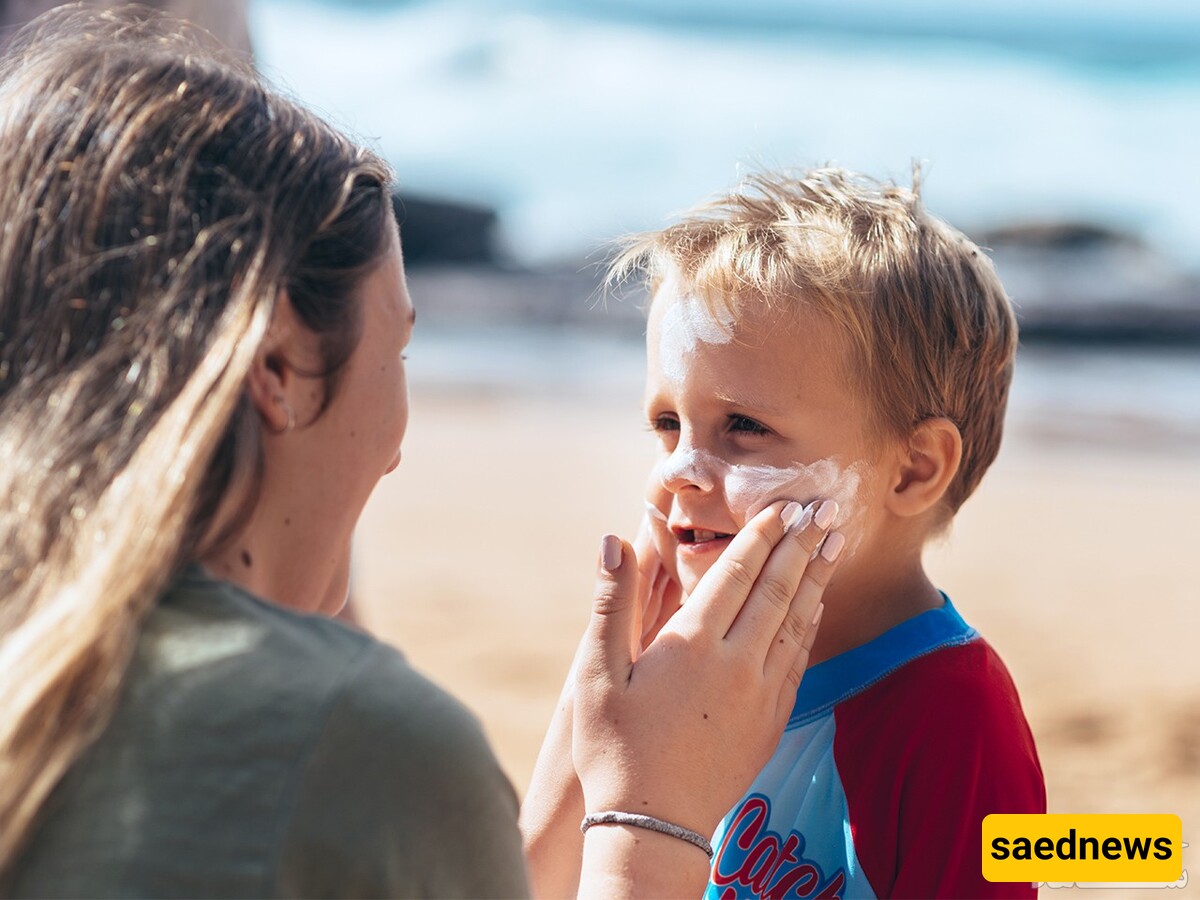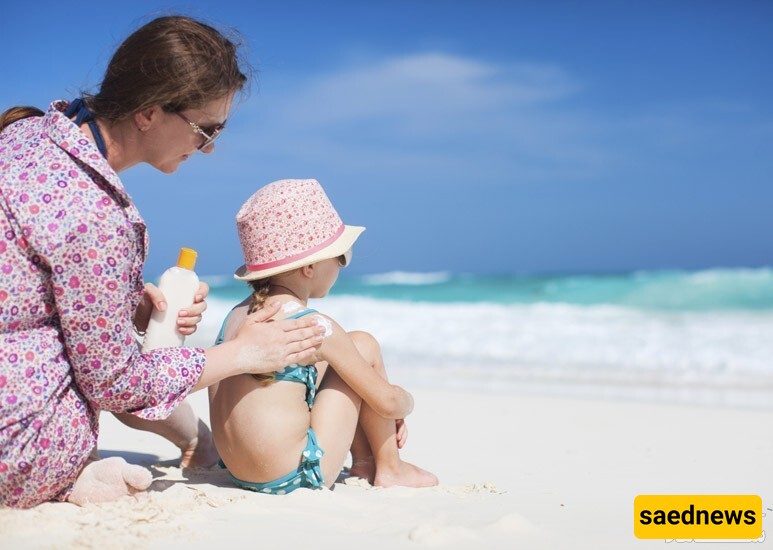As summer approaches, children typically spend more time outdoors. However, children's and infants' skin is very sensitive, making them more susceptible to sunburn and irritation from chemicals. In this article, we will explore the features of children's sunscreen.

If you knew that using children's sunscreen could prevent cancer in adulthood, you would never neglect it!
Hearing the word "cancer" fills us with fear and anxiety. But if you knew that this cancer might affect your child in the future, you would be even more terrified and willing to do anything to prevent it.

Currently, skin cancer is one of the most common types of cancer and is increasingly affecting more people worldwide. In the U.S., one in five people will develop skin cancer during their lifetime. The primary cause of skin cancer is ultraviolet (UV) rays from the sun, which damage cellular DNA, leading to uncontrolled skin cell growth and cancer.
As mentioned, UV rays are the leading cause of malignant and dangerous skin cancer. Unfortunately, these rays pose a greater threat to children's health than to adults.
Using sunscreen in infancy and childhood is even more critical than in adulthood because:
A newborn's skin protection system is not fully developed at birth and matures over time. Therefore, an infant's skin has low defense against environmental factors and is highly vulnerable.
Children's skin is thinner and more sensitive than adults', making it more prone to burning. Each sunburn increases the risk of skin cancer in adulthood.
UV rays harm not only the skin but also the immune system, disrupting its function. For infants and young children with underdeveloped immune systems, this can be a disaster.
Children are exposed to the sun much more than adults. They spend a lot of time playing outside, unaware of the dangers of the sun. Studies show that about 80% of a person's lifetime sun exposure occurs before the age of 18. Given this statistic, it is easy to see the importance of sunscreen in childhood and adolescence. According to a World Health Organization (WHO) report, using children's sunscreen daily can prevent 4 out of 5 cases of skin cancer in adulthood, reducing the risk by up to 80%.
You can start using children's sunscreen for your baby after six months of age. For babies under six months, the best protection is keeping them in the shade. If you are outdoors, such as at the beach, you can use an umbrella for shade. If shade is unavailable, cover the baby's body completely and apply a small amount of SPF 15 sunscreen to their face.

The primary purpose of sunscreen is to prevent sunburn and long-term damage caused by UV radiation, such as premature aging and an increased risk of skin cancer. Most sun damage occurs during childhood, making early skin protection crucial.
Sunscreen functions the same way for children and adults. For example, a broad-spectrum SPF 30 sunscreen provides the same level of protection for both. Therefore, the active ingredients in sunscreens for children and adults are often similar.
The main difference (aside from attractive packaging) is that children's sunscreens are designed for their sensitive skin, making them less likely to contain irritating or harmful chemicals. Additionally, children's sunscreens are usually more water-resistant.
Physical Sunscreen – The best sunscreens for children are physical (mineral-based), meaning they do not absorb into the skin like chemical sunscreens. Instead, they remain on the skin’s surface and reflect UV rays like a mirror. These sunscreens are hypoallergenic and approved by the U.S. Food and Drug Administration (FDA), ensuring they do not irritate or harm a child's skin.
Water and Sweat Resistance – Since children enjoy playing in water and outdoor activities, their sunscreen should be water-resistant.
Broad-Spectrum Protection – Children's sunscreen should protect against both UVA and UVB rays. Fortunately, physical sunscreens containing zinc oxide and titanium dioxide provide broad-spectrum protection.
SPF 30 or Higher – According to the American Academy of Dermatology, children's sunscreen should have at least SPF 30.
Avoid Sprays – Spray sunscreens do not provide complete coverage and may be inhaled, which is not recommended. Lotions and creams are better for full-body coverage.
Fragrance-Free – Avoid sunscreens with added fragrances, as chemical scents can be harmful and irritating to a child’s skin.
Choose Well-Known Brands – Established brands have more experience in formulating safe and effective products.
When purchasing sunscreen, avoid products containing:
Oxybenzone and Avobenzone – These chemicals can be absorbed through the skin and may disrupt hormone production in the body.
Parabens – Used as preservatives to prevent bacterial growth, parabens have been linked to an increased cancer risk with long-term use.
Para-aminobenzoic Acid (PABA) – While PABA absorbs UV rays, it is mildly toxic and may cause allergic reactions in children.
Phthalates – These chemicals act as lubricants in lotions but may negatively affect reproductive health with prolonged exposure.
Methylchloroisothiazolinone and Methylisothiazolinone – These preservatives are linked to allergic skin reactions in infants. Their long names often cause consumers to overlook them, so check the label carefully.
Propylene Glycol – Used for fragrance and moisture retention, this chemical can irritate the skin and allow toxins to penetrate. Look for it under names like propylene glycol, methyl ethyl glycol, or propanediol.
Weather Does Not Matter – Even on cloudy or snowy days, UV rays penetrate clouds (80%) and reflect off snow (80%), so sun protection is still necessary.
Apply Enough Sunscreen – Most parents do not use enough sunscreen on their children. There is no set amount, but it should fully cover all exposed skin.
Reapply Every 2-3 Hours – If your child swims, reapply sunscreen more frequently.
Protect Lips – Use an SPF lip balm to prevent sunburn on the lips.
Avoid Peak Sun Hours – Keep children indoors between 10 AM and 4 PM when the sun is strongest.
Use Sunglasses and Hats – A wide-brimmed hat and UV-protection sunglasses help shield children from sun exposure.
Wear Protective Clothing – Consider clothing with a UV Protection Factor (UPF).
Apply Sunscreen 30 Minutes Before Sun Exposure – This ensures the skin is properly protected before going outside.
Sunscreens for the following three groups have identical formulations:
Children
Pregnant women
Adults with sensitive skin
All three groups should use physical (mineral-based) sunscreens. However, only children should avoid tinted or foundation-based sunscreens. This means children's sunscreen can be used by adults with sensitive skin and pregnant women. Similarly, children can use adult sunscreen, provided it is mineral-based, water-resistant, non-tinted, and has at least SPF 30.

